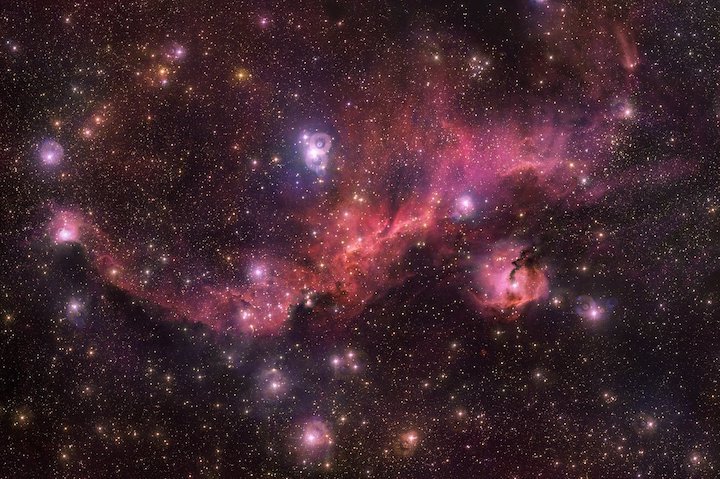13.11.2019

An ancient official in charge of observing the stars in ancient China's Northern Song Dynasty (960-1127) recorded in 1054 one of the most astounding scenes in the universe: the explosion of a supernova.
Almost millennium later, Chinese and Japanese scientists this year detected the highest energy cosmic gamma rays ever observed, coming from the Crab Nebula, the remnant of the same supernova explosion.
The discovery has been published as a highlighted letter in the journal, Physical Review Letters.
Huang Jing, of the Institute of High Energy Physics (IHEP) of the Chinese Academy of Sciences and a spokesperson for the China-Japan collaboration, said the discovery shows the gamma ray astronomical observation has entered an ultra-high energy range over 100 TeV, equivalent to 10 billion times the energy of medical X-rays, and will help scientists better understand the extreme universe.
Discovered in 1912, cosmic rays are still largely an enigma. They are direct samples of matter from outside the solar system. Physicists are still pondering where they come from and how they can be accelerated to ultra-high energies.
Huang's interest in space was ignited by a neighbor in her hometown in east China's Fujian Province when she was little. Under a starry sky, the neighbor told her many stories about stars.
After graduating from university in 1993, Huang went to Japan and studied at the Institute for Cosmic Ray Research of the University of Tokyo. Her tutor was the Japanese founder of the China-Japan joint cosmic ray observation, the ASgamma experiment, set up in Tibet's Yangbajing town, at an altitude of 4,300 meters, in 1990.
Huang, a small woman, followed her tutor to the Roof of the World to join the study.
"Cosmic ray detection depends on national strength," said Huang. "At the beginning of the observation in Yangbajing, China lacked funds and technology. Only at the turn of the century did China's funding gradually increase."
Huang returned to China to build her own lab at IHEP in 2008. She was given just three empty rooms. She and her students furnished them with old tables and chairs. After assembling the detectors, they borrowed other research labs to test their equipment.
In 2012, Huang become a spokesperson of the Sino-Japanese project.
Huang's dedication to understanding cosmic rays came at a price in Tibet.
Once, she and her students set up facilities during a sandstorm. They had to lie or kneel on the ground in the howling wind to install the equipment.
During a public holiday, Huang fell gravely ill with a high fever and altitude sickness at the observatory. The small town had no nurses and Huang desperately needed an injection.
Huang, who had learned to give injections while caring for her mother, asked the male doctor in the small clinic to hold her arm. Then she injected herself. The doctor said he never met a woman like her.
In such harsh conditions, the scientists have achieved fruitful results. The project added new underground detectors in 2014, improving sensitivity significantly.
Before the recent discovery, many leading scientists believed that photons could not be accelerated to an energy higher than 100 TeV.
"But our calculations indicated such high energy photons exist. So we persevered. The discovery is a result of our creative detectors. We didn't follow the design of research teams in other countries. We depended on innovation," Huang said.
"Cosmic rays have been known about for more than 100 years. But their sources are a mystery. I hope Chinese scientists will contribute to solving the mystery."
Quelle: Xinhua
